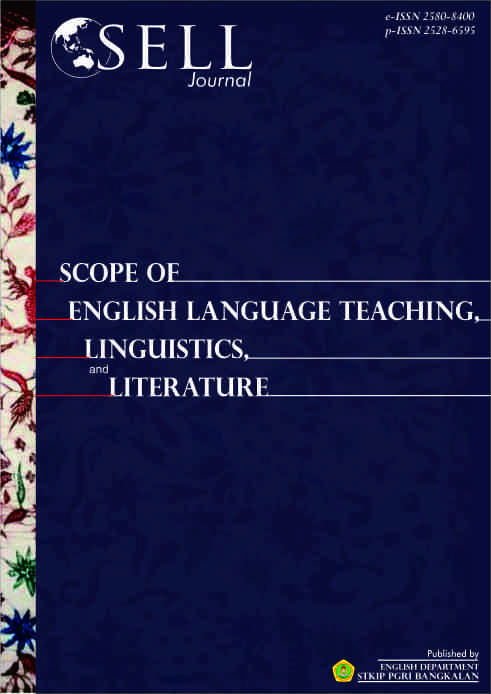Positive Politeness Strategies in Main Character “Moana II” Movie Utterances
DOI:
https://doi.org/10.31597/sl.v10i2.1225Keywords:
positive politeness, Moana, movie , main character, MauiAbstract
This study analysis discusses how often positive politeness appears in the main character's dialogue in the film "Moana 2", what are the functions of positive politeness strategies used in the film "Moana 2" and what are the factors that cause positive politeness strategies to be used in the film "Moana 2". The purpose of this study was to determine how often, what the types, factor and functions of politeness strategies used by the main character in the film "Moana 2", to obtain the types of dominant politeness strategies produced by the main character in the film "Moana 2" and to describe the context of politeness strategies used by the main character in the film "Moana 2". The data of this study are the dialogues of the main characters in the film "Moana 2". This study was conducted using a descriptive qualitative design and only focused and limited to the main character. . In this analysis, positive politeness itself was found to have 5 types, namely notice, exaggrate, use in-group identity markers, avoid disagreement and use friendly and respectful language. The findings of this study are 68 positive politeness strategies. The most dominant politeness strategy spoken by the main character in the film "Moana 2" is use friendly and respectful language. This positive politeness strategy occurs because the main character speaks with politeness and politeness that is inherent as their culture and is in a royal environment.
References
Ary, D., Jacobs, L. C., & Sorensen, C. (2019). Introduction to Research in Education. In Sustainability (Switzerland) (Vol. 11, Issue 1). Wadsworth, Cengage Learning.
Baker, L. M. (2006). Observation: A Complex Research Method. Library Trends, 55(1), 171–189. https://doi.org/10.1353/lib.2006.0045
Brown, & Levinson. (2020). Politeness: Some Universals in Language Usage (Studies in Interactional Sociolinguistics 4). TESOL Quarterly, 22(4), 660. https://doi.org/10.2307/3587263
Chomsky, N. (2006). Language and Mind. Cambridge University Press. https://doi.org/10.1017/cbo9780511791222
Duarte, J. & V. D. M. (2022). “Just Accept Each Other, while the Rest of the World doesn’t” - Teachers’ Reflections on Multilingual Education. Language and Education, 36(5), 451–466. https://doi.org/https://doi.org/10.1080/09500782.2022.2098678
Holmes, J., & Wilson, N. (2022). An Introduction to Sociolinguistics. Routledge.
Rifa’i Abubakar. (2023). Pengantar Metodologi Penelitian. SUKA-Press UIN Sunan Kalijaga Jl.
Searle, J. R. (1979). Studies in the Theory of Speech Acts. In Cambridge University Press.
Syarifuddin, A. P. & Gunawan, H. (2022). Women Language Used by the Main Character in the “Black Widow” Movie: Sociolinguistics Study. Budapest International Research and Critics Institute-Journal (BIRCI-Journal), 5(3), 18351–18358.

Downloads
Published
How to Cite
Issue
Section
License
1. Copyright of this journal is possession of Editorial Board and Journal Manager, by the knowledge of author, whilst the moral right of the publication belongs to the author.
2. Legal formal aspect of journal publication accessibility refers to Creative Commons Atribution-ShareAlike (CC BY-SA), implies that this license lets others remix, adapt, and build upon your work even for commercial purposes, as long as they credit you and license their new creations under the identical terms. This license is often compared to “copyleft” free and open source software licenses.
3. Every publications (printed/electronic) are open access for educational purposes, research, and library. Other that the aims mentioned above, editorial board is not responsible for copyright violation














